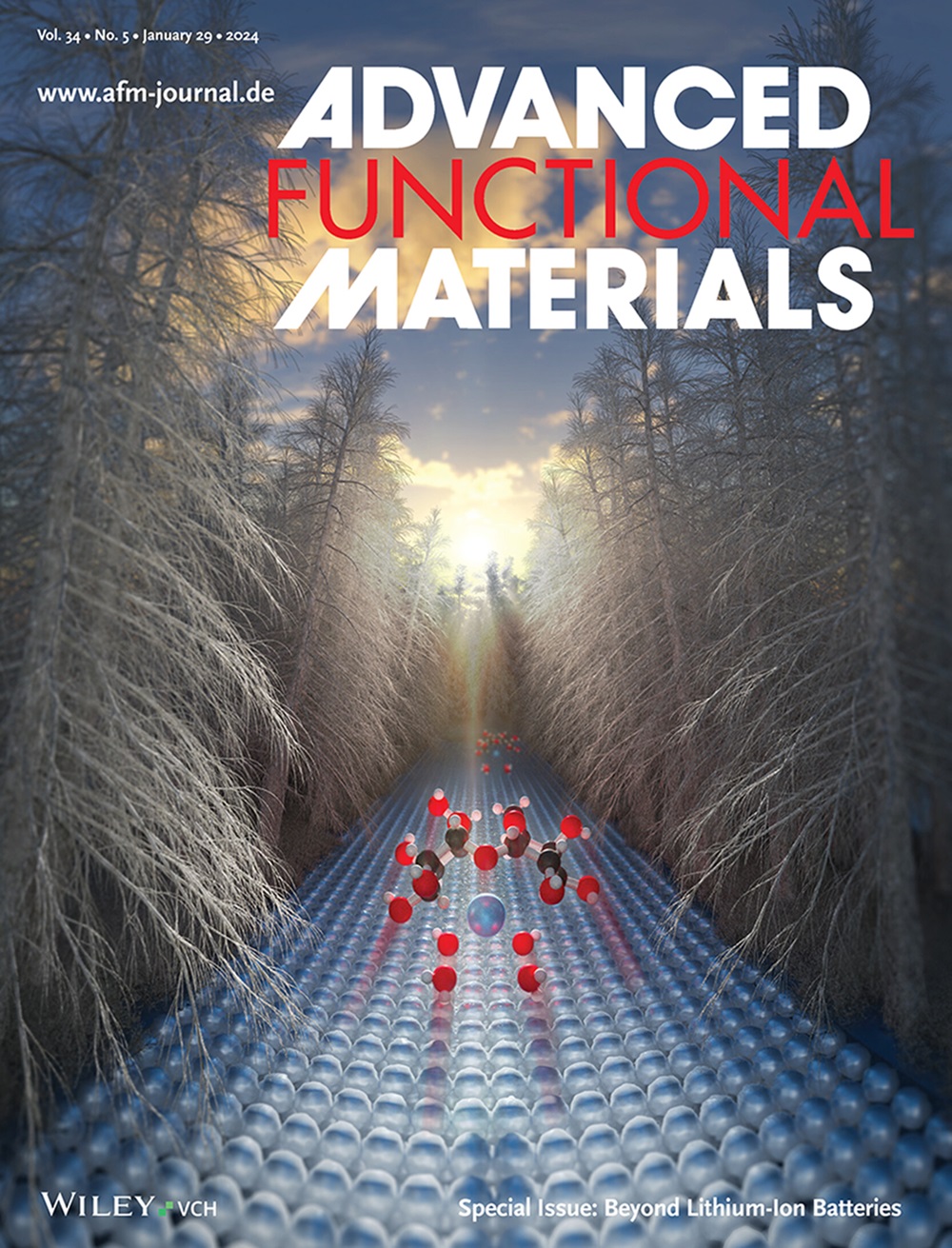Self-supportive Three-Way Photoelectrochemical System Achieving Uranium Recycling, Organic Oxidation, and Electricity Generation in Complex Waters
IF 19
1区 材料科学
Q1 CHEMISTRY, MULTIDISCIPLINARY
引用次数: 0
Abstract
A self-sustaining solar photoelectrochemical cell (SS-PEC) is present that recovers uranium from aqueous uranyl ions (UO22+) with concurrent organic oxidation and electricity production. The employed a titanium dioxide (TiO2) nanorod array photoanode (monolithically combined with a back Si solar cell) directly captures electrons from organic compounds, leading to the oxidation of organic compounds and the decomposition of uranium-organic complexes. On the other hand, uranyl ions can be efficiently adsorbed and reduced on a three-dimensional (3D) vanadium sulfide (VS4) nanowire decorated carbon fiber felt (VS/CF) cathode. The chain-like crystal structure of VS with exposed S22− dimers favors the charge transfer and coordination with UO22+, while the V5+/V4+/V3+ redox cycle facilitates the reductive recovery of UO22+. Consequently, organics are continuously photooxidized on the anode to provide electrons for reducing UO22+ on the cathode with accompanying the electric current generation through the PEC cell. The proposed SS-PEC system successfully operated in various complex water systems, including real uranium tailings wastewater, with high stability (for 30 repeated uses without obvious decay) and uranium recycling efficiency (92%). The excellent selectivity for UO22+ adsorption on VS/CF is demonstrated by the far higher distribution coefficient Kd (14,173 mL g−1) compared with other competing ions.

在复杂水体中实现铀回收、有机氧化和发电的自支撑三向光电化学系统
介绍了一种自维持太阳能光电化学电池(SS-PEC),该电池从水中铀酰离子(UO22+)中回收铀,同时进行有机氧化和发电。采用二氧化钛(TiO2)纳米棒阵列光阳极(与背硅太阳能电池单片结合)直接从有机化合物中捕获电子,导致有机化合物氧化和铀有机配合物分解。另一方面,铀酰离子可以在三维(3D)硫化钒(VS4)纳米线装饰的碳纤维毡(VS/CF)阴极上有效吸附和还原。暴露S22−二聚体的VS具有链状晶体结构,有利于与UO22+的电荷转移和配位,而V5+/V4+/V3+氧化还原循环有利于UO22+的还原恢复。因此,有机物在阳极上连续光氧化,为阴极上的UO22+还原提供电子,并伴随电流通过PEC电池产生。提出的SS-PEC系统在各种复杂水系中成功运行,包括真实的铀尾矿废水,具有高稳定性(30次重复使用无明显衰减)和铀回收效率(92%)。与其他竞争离子相比,VS/CF对UO22+的选择性更高,分配系数Kd (14,173 mL g−1)。
本文章由计算机程序翻译,如有差异,请以英文原文为准。
求助全文
约1分钟内获得全文
求助全文
来源期刊

Advanced Functional Materials
工程技术-材料科学:综合
CiteScore
29.50
自引率
4.20%
发文量
2086
审稿时长
2.1 months
期刊介绍:
Firmly established as a top-tier materials science journal, Advanced Functional Materials reports breakthrough research in all aspects of materials science, including nanotechnology, chemistry, physics, and biology every week.
Advanced Functional Materials is known for its rapid and fair peer review, quality content, and high impact, making it the first choice of the international materials science community.
 求助内容:
求助内容: 应助结果提醒方式:
应助结果提醒方式:


